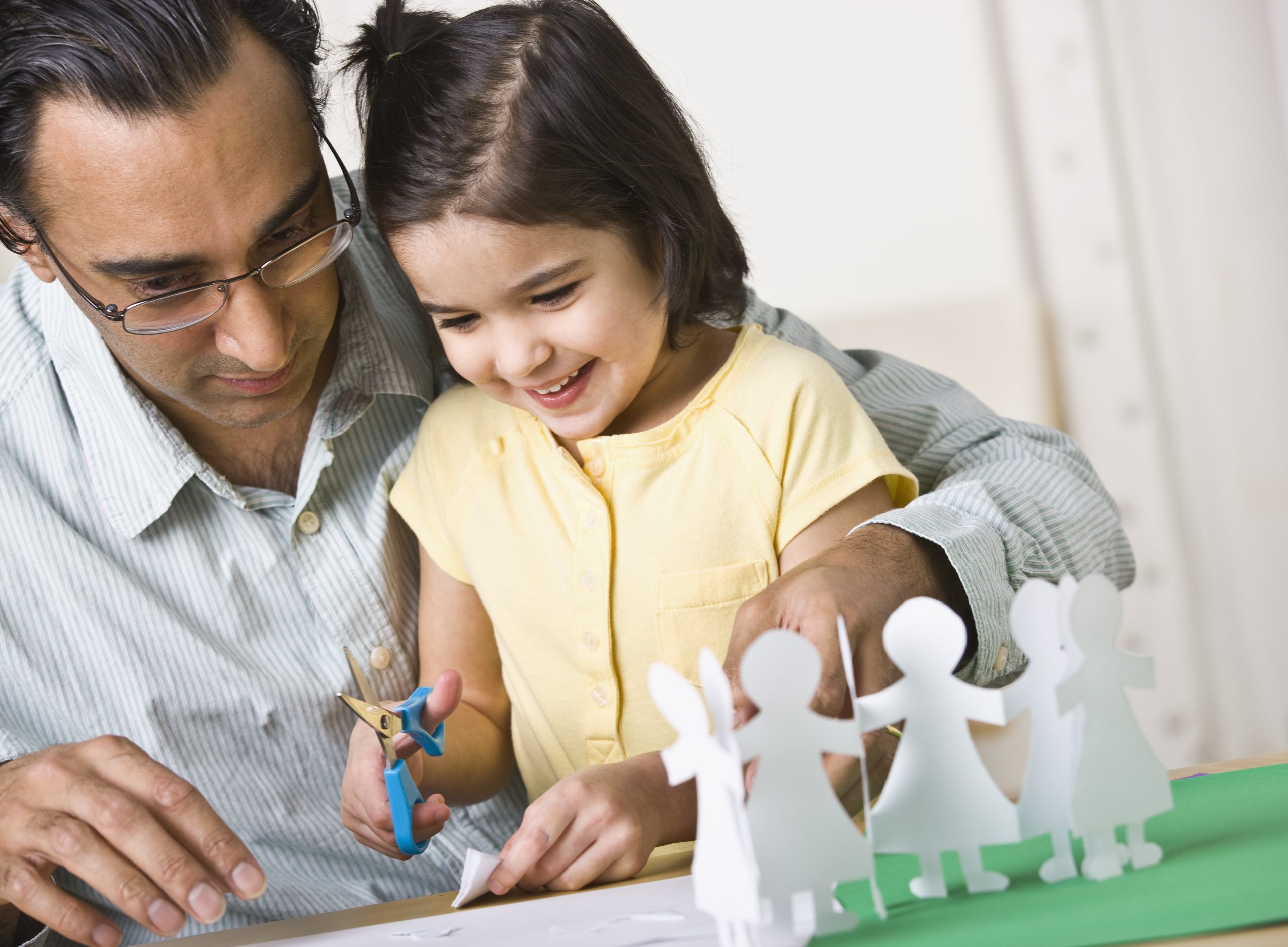Enabling kids to shine bright in the new academic year
In this new academic year cover story, PW presents a motivation and success guide devised by experts to enable parents to equip children with the mindset, skills and confidence to achieve academic and extra-curricular success -Kiran Balimane & Cynthia John

The new academic year starting June-July is the season when monsoon rains start, bringing joy and hope to farmers countrywide. It’s also a season of hope and expectation in millions of homes as children look forward to a new year of academic, co-curricular and sports learning in India’s 1.5 million schools, 45,000 colleges and 1,167 universities.
Educators, parenting experts and counselors are unanimous that the promise and potential of the world’s largest child and youth population can be better realised if they are mentally and emotionally prepared to make it their best year.
According to a study published in Frontiers in Psychology (March), encouraging children to set academic goals significantly influences and improves their learning outcomes. “Encouraging learners to set goals is used widely to promote behaviour change. When goals are specific, attainable, optimally challenging, and relatively close at hand, they have a strong impact on both learning behaviour and performance,” says the study.
Dr. Srishty P. Gajbhiye, a Bengaluru-based psychologist and life coach who was recently awarded an honorary doctorate from the Delhi-based World Human Rights Protection Commission, agrees. “The beginning of the academic year sets the tone for the next 12 months. Parents should use this time to motivate children to set academic and extra-curricular learning goals. This empowers and teaches them to break down their big dreams into manageable tasks providing direction and purpose. This is especially important during the formative years when children’s sense of identity and self-worth is developing. Living with purpose through goal-setting, vision-building, and developing self-confidence is a lifelong journey. The role of parents is to guide and support children on this path,” says Dr Gajbhiye.
In this new academic year cover story, PW presents a motivation and success guide devised by experts to enable parents to equip children with the mindset, skills and confidence to shine brightly and achieve academic and extra-curricular success.
Seven steps to build ‘academic confidence’
Academic confidence is “a student’s belief about performing a task at a particular level in order to attain a specific academic goal” (Sander & Sanders, 2005). It requires strong self-belief and expectation of success.

Aarti Takawane
“Developing academic confidence requires capability to perform well scholastically. It goes beyond acquisition of knowledge and requires development of capability to absorb and apply knowledge. Developing children’s confidence is a key determinant of success, and requires motivation and perseverance,” says Pune-based child psychologist Aarti Takawane.
Takawane offers a 7-point guide to build children’s academic confidence:
- Teach organisation skills. Encourage children to neatly organise schoolbooks, stationery, prepare home study time-table, etc. Starting from packing the school bag the previous night to regularly attending to homework and meeting project deadlines, parents should motivate children to organise for the school day as well as home study. It’s also a good idea for children to meditate for at least five minutes before leaving for school. This will calm and energise them mentally for the day ahead.
- Set realistic goals. Start by asking children to set achievable academic goals by “eating the elephant” i.e, breaking down big challenges into small tasks. Show children how to do this. It will build their confidence to set ambitious goals.
- Effective time management. Sit down with children and make a home study/activities time table. This schedule should include homework and recreational activities such as music and games. Predictability of routine will improve their self-confidence.
- Participation in classroom discussions. Encourage children to participate in classroom discussions and activities to develop competence and sense of belonging. You could prep them by encouraging them to ask questions at home during dinner-table conversations.
- Request academic assistance. Encourage children to solicit assistance from teachers/peers when necessary. Explain that asking for help is a sign of strength — it indicates willingness to learn thoroughly.
- Celebrate achievements. Acknowledge and celebrate every small achievement of children. Celebrating personal milestones reinforces the belief that success is attainable through effort and dedication.
- Engage in ‘academic’ conversations. Talk to children about their school day, teachers, peers, and challenges confronting them. This will enable you to understand their challenges and devise ways and means to confront them.

Dr. Srishty Gajbhiye
Goal-setting activities
Dr. Srishty P. Gajbhiye (quoted earlier) believes motivating children to set specific, attainable goals is imperative for boosting their learning outcomes. “Teaching children goal-setting supported with actionable plans empowers them to chart their own course towards achieving academic and extra-curricular success,” says Dr. Gajbhiye.
Dr. Gajbhiye recommends nine interactive, engaging activities for children to learn goal-setting which will motivate them to aim high. However she advises parents to adapt each activity to suit the child’s age and stage of development.
- Treasure mapping (3-7 years). Ask children to create a ‘treasure map’ with pictures and symbols leading to the goal they have set. Provide ideas and help them visualise and draw simple pictures. Visualising their path to the set goal provides them a clear picture of each milestone and ways and means to achieve their objectives.
- Emotion charades game (3-7 years). Ask children to act out different emotions with you guessing and naming the right one. This game develops children’s emotional intelligence and empathy, important attributes towards goals fulfillment.
- Gratitude Jar (5-16 years). In this game, children are asked to write down the things they’re grateful for on a paper slip everyday and drop it in a Gratitude Jar. This develops perspective and emotional intelligence.
- Mindful colouring activity (5-16 years). Ask them to colour their treasure maps. This enjoyable activity focuses their attention on set goals.
- SMART Goals (6-16 years). Teach children to set Specific, Measurable, Achievable, Relevant, Time-bound (SMART) goals. Use simple worksheets to set and write down the goals.
- Obstacle Course (6-16 years). Set up a simple physical obstacle course in your living room/terrace where each obstacle represents a challenge to overcome on the way to attaining set goals.
- Guided imagery (6-16 years). Lead children through a visualisation session where they imagine achieving their goals.
- Muscle relaxation (8-16 years). Teach children to relax muscles through simple exercises (available on YouTube.com). This relaxes the body-mind and boosts concentration and focus.
- Goal thermometer (10-16 years). In this activity, children create a goal thermometer — you can draw it on a white sheet or make it online on Google Sheets/MS Excel, and mark different levels. As children progress toward achieving set goals, fill and mark the achievement milestones. This provides visual motivation to children to achieve their goals.
 6 ways to nurture a Growth Mindset
6 ways to nurture a Growth Mindset
American psychologist and Stanford University professor Prof. Carol Dweck in her best-seller Mindset: The New Psychology of Success (2006) coined and propounded the ‘growth mindset’ — a belief that one’s skills and capabilities can be nurtured through effort and perseverance.
“In a growth mindset, people believe that their most basic abilities can be developed through dedication and hard work — brains and talent are just the starting point. This view creates a love of learning and a resilience that is essential for great accomplishment,” writes Dr. Dweck.
Dweck and colleagues at Mindset Works have developed a free, easy-to-use test to assess whether young people approach the learning process with a fixed or growth mindset. “Most children have a mixed mindset, with stronger tendencies towards growth or fixed overall. Regardless of what type of mindset your child is starting out with, there are many simple and effective ways to nurture a growth mindset in young people of all ages.”

Dr. Carol Dweck
Dr. Dweck’s prescription to develop a growth mindset as summarised on https://heartmindonline.org/:
- Talk about the brain. You don’t need to be a neuroscientist to learn how effort and practice change the brain! Share with children you care about, at an age appropriate level, how we can increase intelligence and ability when we train our brain like a muscle — with dedicated effort, practice, and consistency over time.
- Embrace mistakes as opportunities to learn. A much-loved kindergarten teacher once said “there are no mistakes, only lessons.” When we try and fail, not only do we learn how NOT to achieve our goal (which is valuable learning in itself), but we also gain valuable insight into how to refine our strategies, stay persistent, and handle failure with self-compassion and grace. Try to catch the young people you care about making mistakes and support them through the humbling process of trying again, and again, framing each mistake as a successful learning opportunity.
- Understand how emotions affect learning. Have the young people you care about ever blanked on a test, frozen on stage before a speech or performance, or seriously underperformed in a high-pressure situation in their sport? Chances are, intelligence and ability are not to blame — the stress response is. Talk with the young people in your life about how the stress response — sometimes referred to as “fight-flight-freeze” can get in the way of doing their best. Then brainstorm strategies together to help them remain calm and cool in order to learn and perform better.
- Harness the power of “yet”. Studies have shown that using the words “yet” and “not yet”, when a child encounters a setback, increases their confidence and persistence. The power of “not yet” is that it transforms difficulty and failure into future success that just hasn’t happened YET, but will!
- Praise wisely. Focus your praise on effort, persistence, and focus, rather than talent or intelligence. This type of praise called “process praise” is linked to a healthier mindset and greater success than “intelligence praise”, which focuses on children’s innate abilities.
- Seek out challenges. Encouraging children to try really, really hard to learn a new skill is an effective way of boosting the growth mindset — especially when we teach them that challenging our brains in this way is what allows them to get stronger and smarter! Even though children may feel more “successful” when they achieve an easy goal with little effort, doing so does not provide adequate stimulus for their brains to adapt to challenge in ways that actually boost intelligence and ability.

Dr. Monica Nagpal
Encourage ‘mindful living’
Dr. Monica Nagpal, a Hyderabad-based psychologist, parenting coach and founder of hopeandhappiness.com, believes children who are encouraged to “live mindfully i.e, to appreciate, reflect and take steps to internalise their awareness and voice appreciation”, develop capability to focus on solutions. “A mindful attitude sets children up to cope with academic stress and confront challenges with a positive and can-do mindset,” says Dr. Nagpal
To develop children’s positive mindset, Dr. Nagpal offers a practical prescription:
- Gratitude prayer. Encourage children to start the day with a two-minute gratitude prayer. This develops their thankfulness and appreciation.
- Record progress. Persuade children to write a diary noting their goals, progress towards attaining them.
- Mindfulness exercises. Practice mindfulness exercises together with children. Lie down in a relaxed position, breathe deeply, and slowly focus on one part of the body (head or toes), relaxing the muscles. Now move to the next. Do this from head to toe, breathing slowly with eyes closed.

Build resilience

Priyanka Sethi
According to Priyanka Sethi, a Gurugram-based psychologist and Director of ‘Arambh, The Learning Space,’ children will need to confront many challenges including class bullies, disappointments in friendships and academic stress throughout the school year. “It’s an important duty of parents to build their mental strength and resilience to confront and overcome these challenges,” says Sethi. Her recommendations:
- For preschoolers. For this age group, focus on building secure bonds with parents. Encourage imaginative play to explore and process their emotions including those which cause anxiety and stress. Reassure them of your unconditional love and support. This will give them the confidence to cope and confront difficult situations.
- Primary/middle school children (7-12 years). Parents should pay attention to teaching them problem-solving skills, instilling a growth mindset and encouraging self-care such as mindful nutrition; the importance of exercise, and sufficient sleep.
- Adolescents. During this phase, it’s important to appreciate teens’ talents and strengths, and to promote autonomy within boundaries. Also teach effective emotion management techniques to cope with failure. Most important, set clear boundaries and structure so that your adolescent feels free to explore while respecting set limits. This ‘safe’ space provides opportunities to learn from failure and develop resilience.
Also read: New Academic Year 2024-25 Creating conducive home study environment


















Add comment